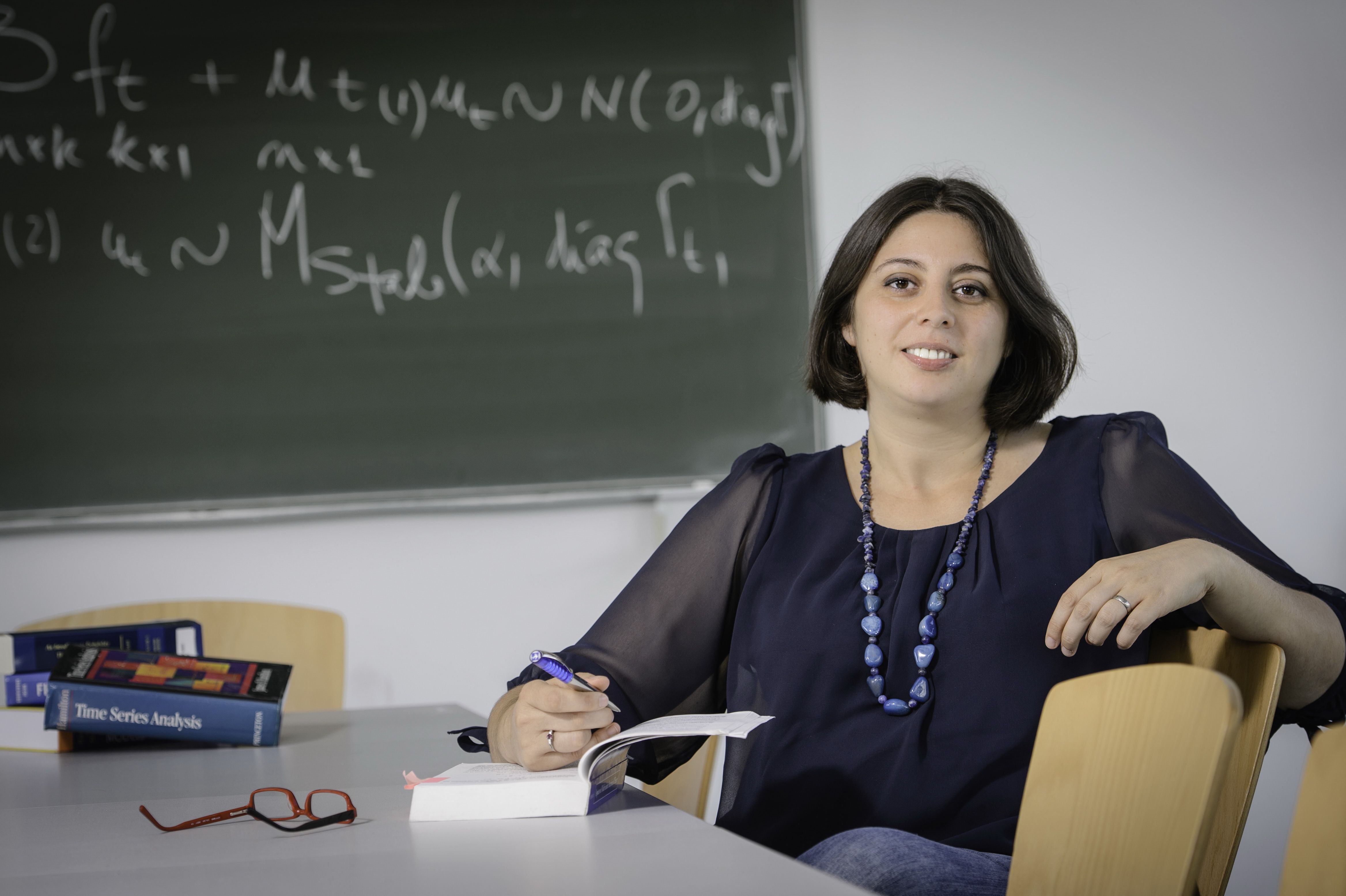
Measuring the heartbeat of financial markets
Dr Roxana Halbleib, economist at the University of Konstanz, has been awarded funding from the Heisenberg Programme for her research project on the predictability of financial risks
The 2008 financial crisis led to losses for US and European banks equivalent to the GDP of leading European countries. These losses were mostly offset with taxpayers’ money. Dr Roxana Halbleib, economist at the University of Konstanz, is conducting research into the predictability of risks in the financial sector. In her project, she uses big high-frequency financial data, retrieved in nanoseconds, to forecast risks more accurately and minimize potential losses. In recognition of her new approach, the development of risk models on the basis of activity times, she has now become the first female economist in Germany to be acknowledged by the renowned Heisenberg Programme of the German Research Foundation.
Due to the requisite anonymity of its stakeholders, the financial market delivers only aggregated data, which is why no statements can be made about individual players. Available to economists, however, are data on share prices that are expressed in time series. For a long time, mathematical modelling did not take into account what happened during the course of a day. Nowadays, in times of online and algorithmic trading, movements in the financial markets take place in nanoseconds. The relevant data on high-frequency prices and trading have actually been available since 2000 and make it possible to use data science for risk research. Roxana Halbleib has used external funding, among others from the Heidelberger Akademie der Wissenschaften and the University of Konstanz’s Zukunftskolleg, to purchase a dataset from the New York Stock Exchange that maps equity trading from 2009 to 2019.
While the practice of collecting data once a day leads to a huge loss of information, the time series approach, which reports activities in nanoseconds, delivers too many data to develop a prediction model. So far, academics and practitioners have made do with taking samples every five or ten minutes. Roxana Halbleib: “Who can say that every five or ten minutes something happens that triggers a risk?” Her newly developed method departs from the common practice of measuring market activity in regular time intervals of equal lengths.
The economist, who has been funded by the Margarete von Wrangell Programme and working at the Department of Economics since 2011 and has also been a fellow of the Zukunftskolleg of the University of Konstanz since 2013, concentrates on trade intensity. Data are sampled more frequently in turbulent times when trading is particularly active and less often in calmer ones. This intrinsic time series runs faster when the market is very active and slows down when the market is calm. “In periods of intensive trading, the risk is higher because more changes occur. A lot of information is also available here,” she explains. These data determine the rhythm that makes it possible to reproduce the “heartbeat” of market activity more realistically when sampling data and to better predict extreme events.
Roxana Halbleib’s specialist field is econometrics, a branch of economics in which economic and financial phenomena are quantified on the basis of mathematical and statistical methods. For her new model she uses a mathematical approach already found in other disciplines such as medicine (e.g. heartbeat dynamics) or the natural sciences (e.g. meteorological turbulence or seismic activity). The variable “t”, which describes calendar time, is replaced by a function of “t”. “This allows a flexible and realistic assumption with which extreme financial risks can be predicted in the future,” says Roxana Halbleib.
With the Heisenberg Programme, the German Research Foundation wants to enable outstanding researchers who fulfil all the conditions for appointment to a professorship to prepare themselves for a senior academic position and to work on advanced research topics during this period. Awards are conditional on the high scientific quality and originality of research projects as seen at international level. Funding is granted for a maximum of five years. The Heisenberg Programme provides for several funding options, including fellowship, position or professorship. The programme is very flexible and makes it possible to switch between the different options over the course of the five-year funding period.
Key facts:
- Konstanz economist Dr Roxana Halbleib will receive funding from the Heisenberg Programme of the German Research Foundation from 2019 on
- Research project to improve the predictability of financial risks
- Funding over a maximum period of five years
- Several funding options possible: fellowship, position, professorship
- Possibility to switch between the options during the course of the project.
Press release: No. 08/2019
